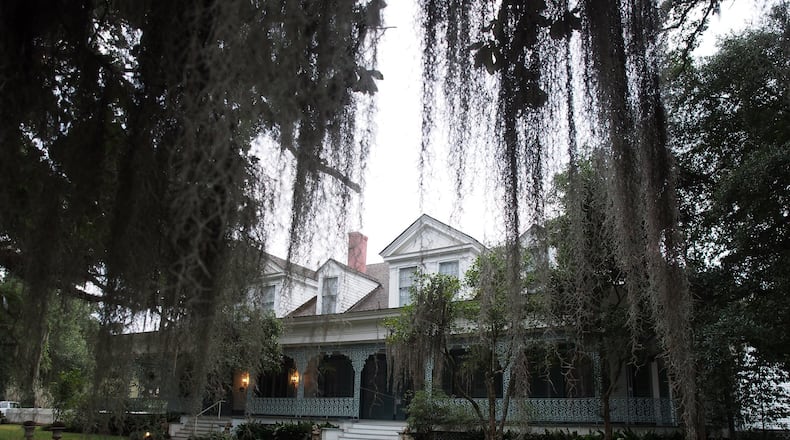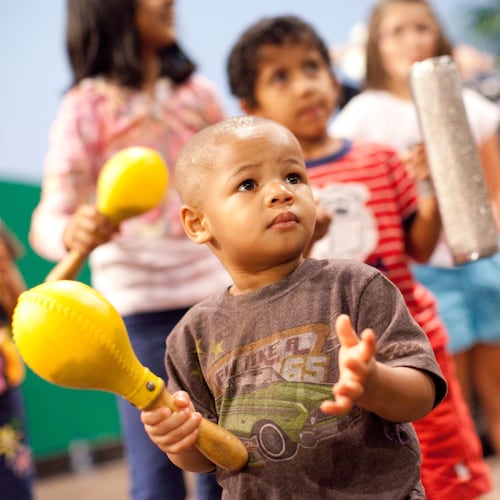IF YOU GO
The Myrtles
7747 U.S. Highway 61 in St. Francisville, hosts daily history tours year-round and evening mystery tours in October. Five rooms in the original home are available for rental, along with the caretakers quarters, four garden rooms built in the 1980s and four small cottages built in 2012. Rates range from $115 to $400, including breakfast. A restaurant called the Carriage House also operates on the property. For more information, go to myrtlesplantation.com or call 800-809-0565.
Not everyone who rents a room at the Myrtles Plantation in St. Francisville, La., stays the night.
“About once a month, someone leaves,” says John Moss, owner of the Spanish-moss-draped antebellum home that’s billed as one of the most haunted places in America. “People absolutely get freaked out.”
Sometimes staffers hear footsteps quickly retreating down the stairs and gravel slinging in the driveway as overnight guests beat a hasty escape. Other times, they find rooms empty, the beds disheveled and the room key tossed to the floor.
But hauntings can be good for business, especially when you run an old plantation as a tourist destination and bed and breakfast. “You have a lot more people come on account of the hauntings than leave on account of them,” Moss says.
I visited the plantation recently, when the Myrtles hosted a special evening mystery tour. I also booked a room in the main house for the night. Then I did a quick online search, which turned up all kinds of spooky reports about the Myrtles, including the alarming news that 10 murders had occurred there since it was built in 1796.
But first, some history.
The plantation was originally built by Gen. David Bradford, aka Whiskey Dave from the Whiskey Rebellion, who obtained a 650-acre land grant near Bayou Sarah and built his home on the property. In 1820, the home was sold to Bradford’s son-in-law; it changed hands several times after that.
Most of the hauntings date to the time that an attorney named William Winter lived at the plantation. When his 3-year-old daughter became ill, he called in a slave named Chloe from a neighboring plantation who was reputedly a voodoo princess to try to heal her. As the story goes, the little girl died anyway, and in retaliation Winter had Chloe hanged from a tree.
Winter himself died a few years later, when a rider approached the house and called out his name. When Winter stepped outside, he was shot in what is the only officially corroborated murder on the grounds. He staggered back indoors, where he crawled to the 17th step of the main staircase, then died in his wife’s arms.
Guests say they still hear his footsteps.
Moss says when he and his wife purchased the home in 1992, they figured the tales of hauntings were simply that — stories. He chuckled at the comments of an old woman who’d grown up in the area and told him that the old houses around St. Francisville all have spirits.
“They’ll let you know in the first 90 days if you can stay,” Moss says the woman told him. “If it’s OK, things will settle down. If not, you’ll move on.”
It didn’t take long before Moss changed his mind. He heard voices calling his wife’s name and became convinced that spirits visited his son, who was a toddler at the time. He believes in the home’s haunting, but says there’s nothing vile, evil or sinister about it.
“We tell people we don’t have ghosts — we have guardian angels,” he says.
The gray-green moss that drips from tree branches out front sets a slightly creepy mood as you roll up the driveway. A 125-foot porch with ornate wrought iron railings stretches across the front of the house. Magnolias, crepe myrtles and live oaks grow alongside a 100-foot well dug by slaves and a cistern where plantation occupants reportedly stashed valuables during the Civil War.
Staffers are quick to show off photos taken on the grounds that purportedly show ghosts — usually Chloe or two little Victorian girls — peering out of windows or lingering in the background. Guests say they’ve felt something tugging on their legs when they sleep in a room where a soldier had his foot amputated. Some say a little girl snuggles next to them in another. Dolls move around one room, and guests’ luggage gets rearranged. More than one visitor has reported that ghost-like shadows have appeared in photographs — weeks after the pictures were snapped.
“All kinds of things are odd and different,” Moss says.
The producers of the television programs “Ghost Adventures” and “Ghost Hunters” have had some pretty weird experiences here, too: creepy noises, voices, a moving lamp and a ball that inexplicably rolled down the staircase when they asked for a sign from any of the resident spirits.
So, yes, even though I don’t really believe in ghosts, I was a little creeped out when I unlocked the door to the William Winter room, where the girl supposedly died at the hands of the voodoo priestess.
Accommodations are comfortable but in need of sprucing up. The bright pink bathroom definitely needed a remodel. Guests should come with a sense of adventure.
In the end, I’m proud to say I survived the night. No one so much as tickled my toes, rearranged the sheets or tapped on the wall — but I’m still checking to see if anything suspicious is going to appear in the photos I took.
About the Author
Keep Reading
The Latest
Featured


